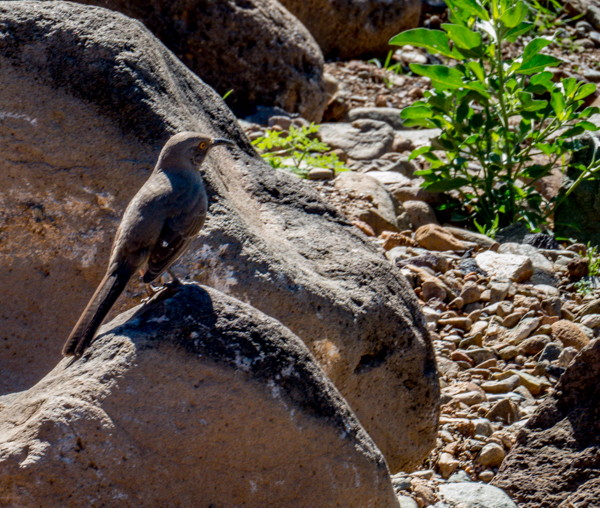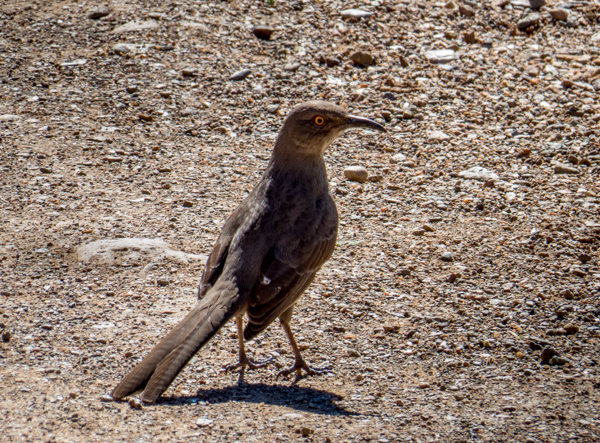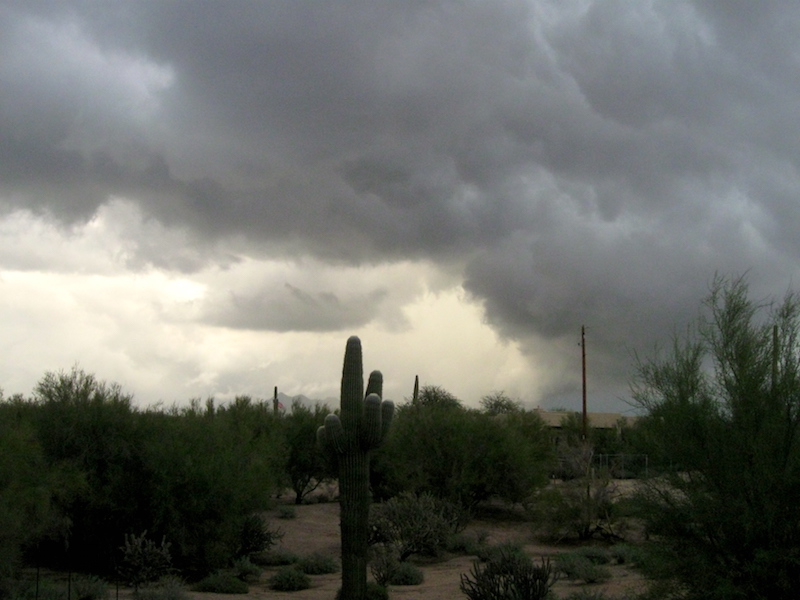This past month was a busy time for us with a number of visitors to our desert home. Many of our guests came from the north or northeast to enjoy our warmer days and sample an early spring. One of our favorite places to take people who want to walk in the desert is the Jewel of the Creek Preserve near the Spur Cross Conservation Area in Cave Creek, AZ.
Our last few guests of the month were treated to the Jewel with a beautiful spring day at the creek. It was warm, but a soft breeze made it quite bearable and the addition of several canopied stops made it that much more pleasant.
As we began our descent to the creek we saw many beautiful cactus in bloom.
The yellow, near orange, Englemann’s Prickly Pear was one of the first to greet us.

Perhaps the most spectacular blooms were on the Engelmann’s Hedgehog cactus. The twin blooms below were a portent of things to come.
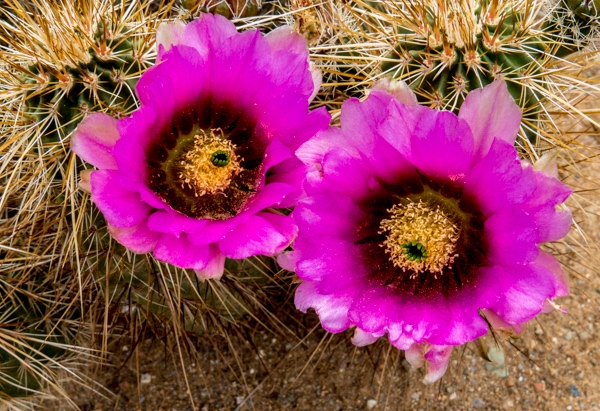
It appears as a near contradiction that such a delicate flower can be nestled among these sharp, spiny needles, but in the desert plants survive the animal marauders by having such defenses.
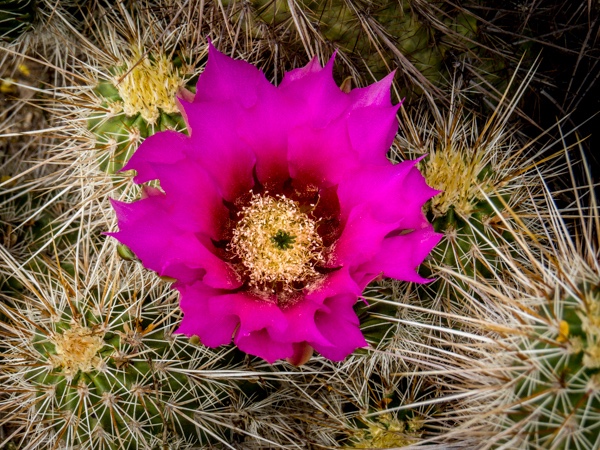
As the days wear on, the Hedgehog cactus begin to close shop and create an urn-like shape.
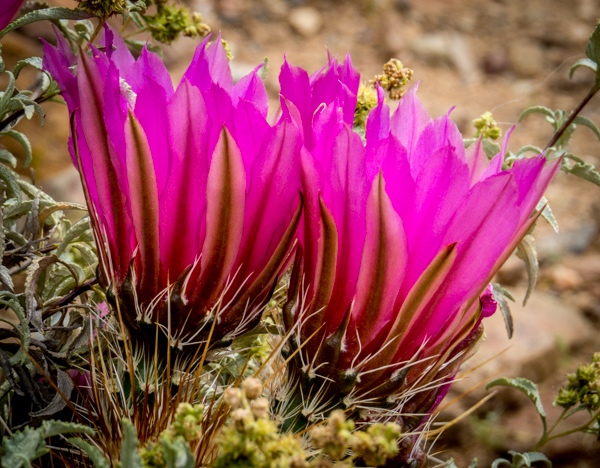
The Sonoran Desert has probably achieved a level of notoriety because of some of their desert denizens and usually we see many lizards, but not too many snakes. On this hike, however we were “treated” to a couple of rattlesnake sightings. The fellow below briefly posed for us as he meandered along his route. We kept our distance, but were able to get some good pictures.
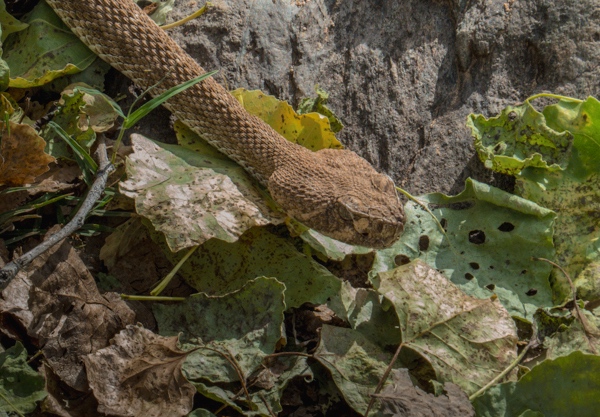
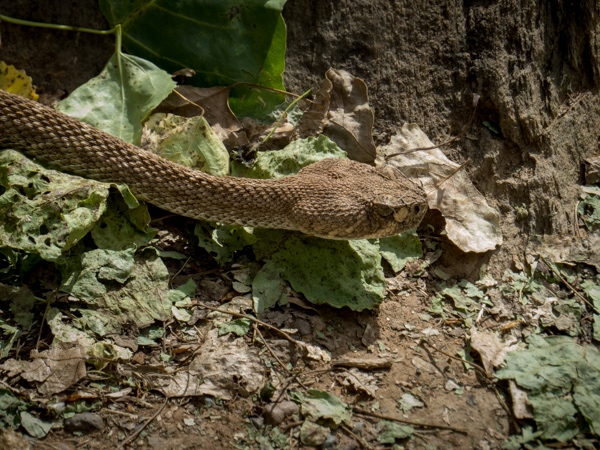
We estimate that this snake was approximately 36-40 inches long.

The trees were in their glory as well. In addition to the Palo Verdes, the Velvet Mesquites were strutting their frothy catkins.

About ten minutes after seeing the first rattlesnake, we came across our second rattler. It is hard to see, but the head of the snake is inside the yellow circle with most of the body above.
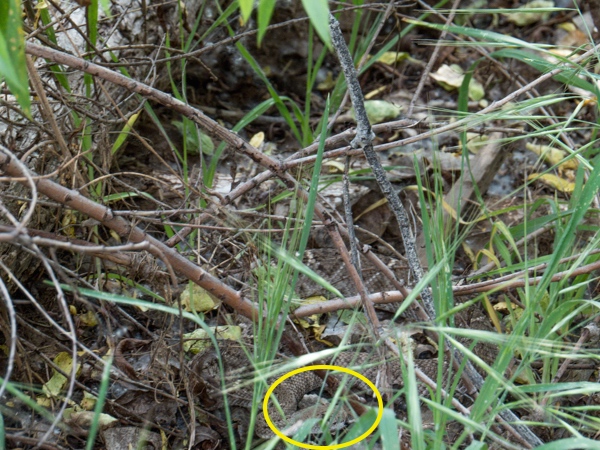
We decided that we had enough snake encounters and began the return trip to the trail head. Along the way, this Cholla was highlighted by the arc of the sun. The dark green of the flesh juxtaposed against the lighter needles created a beautiful pattern.
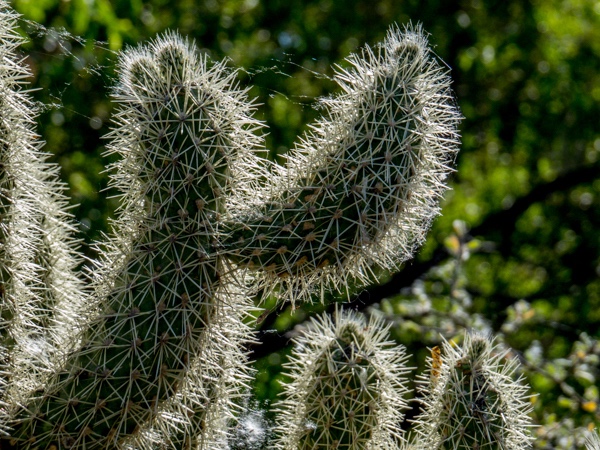
Some of the Prickly Pear cactus were a deeper orange color as opposed to the more traditional yellow.
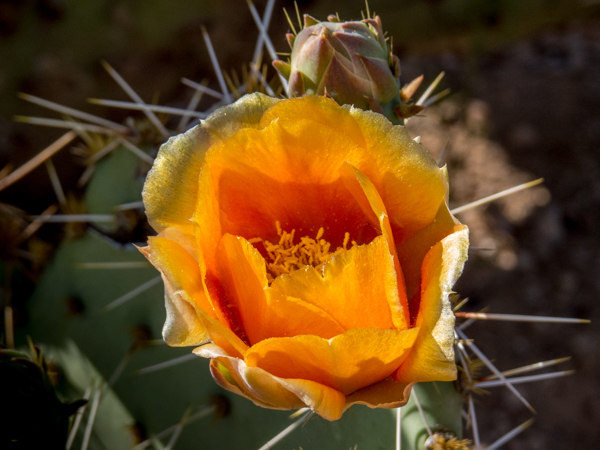
At the start of the trail this lone Compass Barrel cactus (my best guess) stands watch in the middle of the path to greet those who are coming or going. Since this is a managed area cared for by the Foothills Land Trust, it will probably survive and thrive.
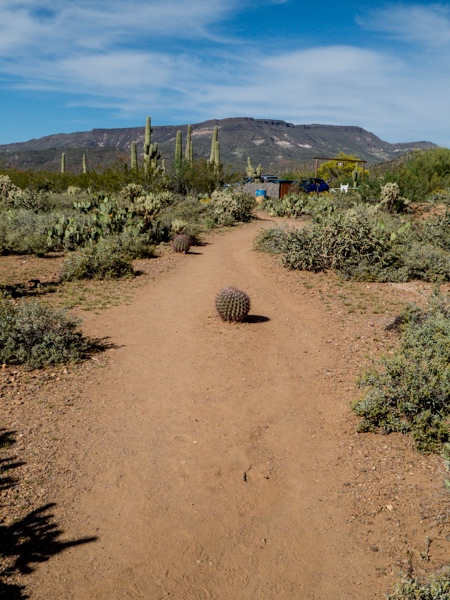
If you are in the Cave Creek, AZ area, and you enjoy hiking, I think a walk along the Jewel of the Creek would be a worthy and manageable adventure!
